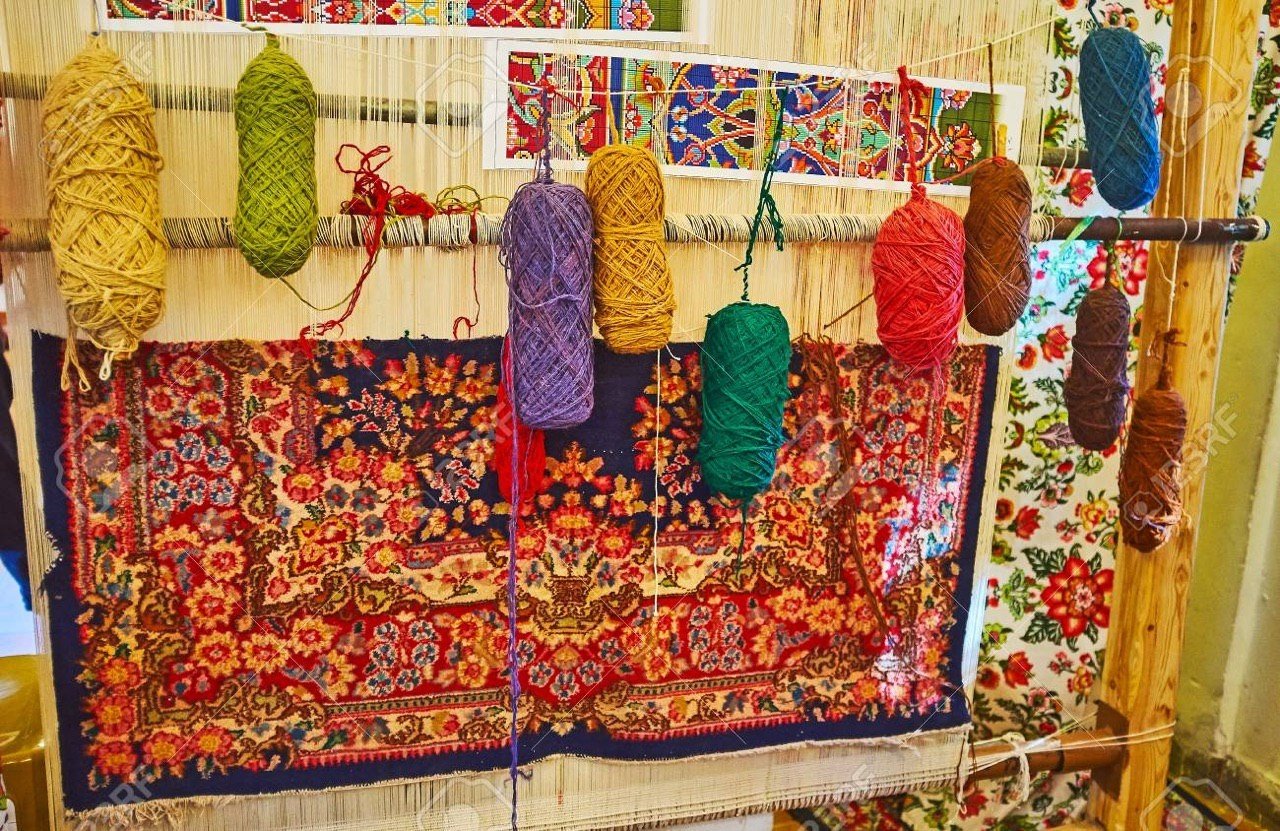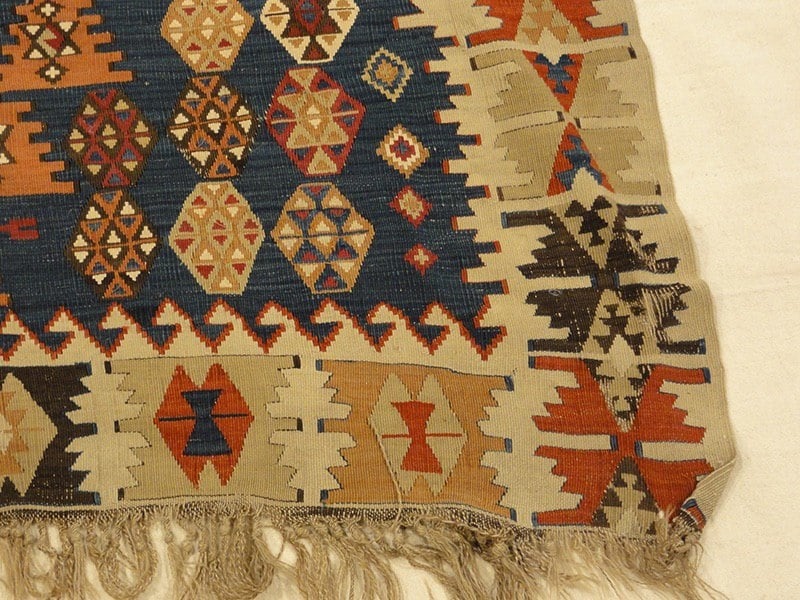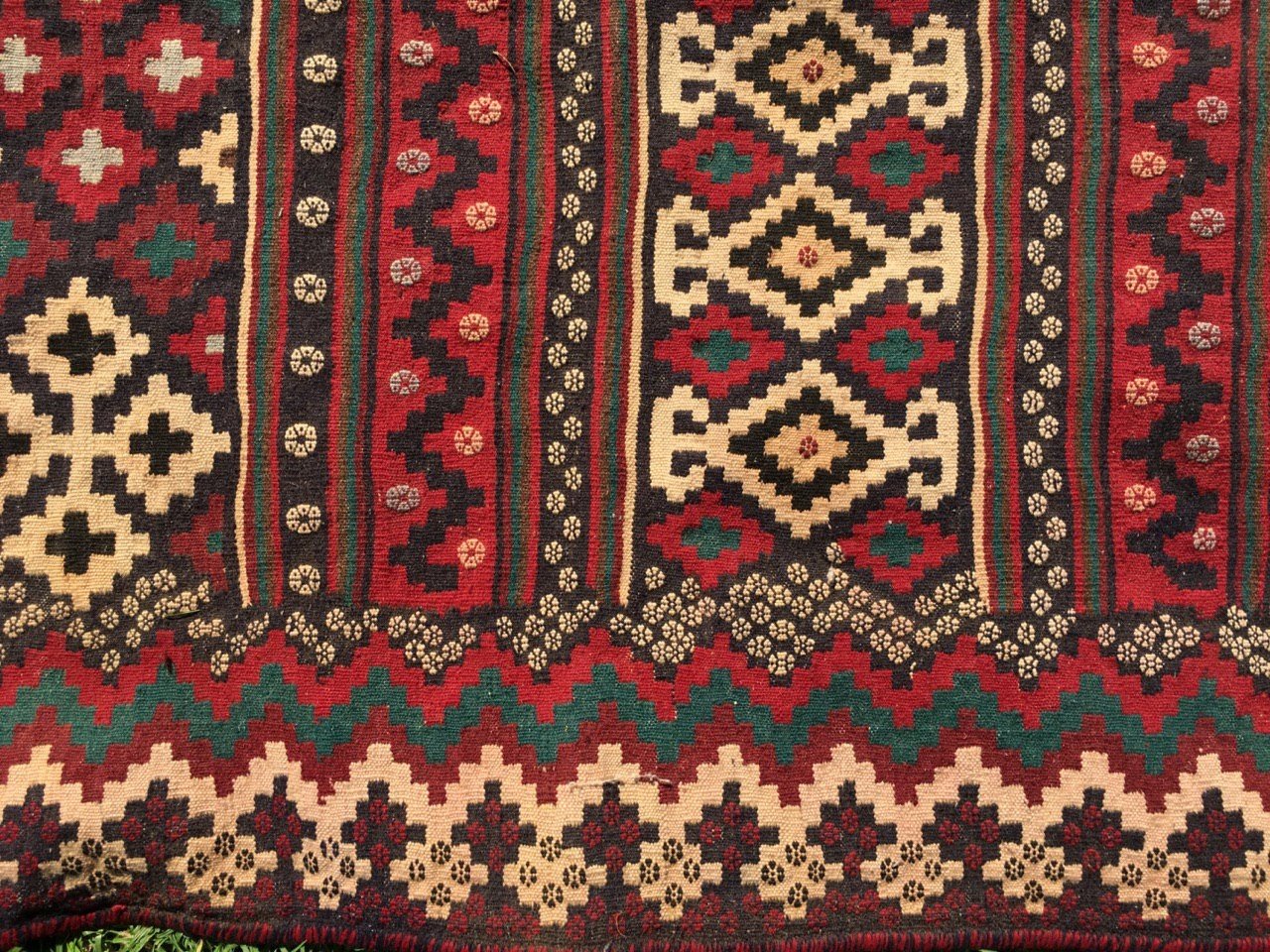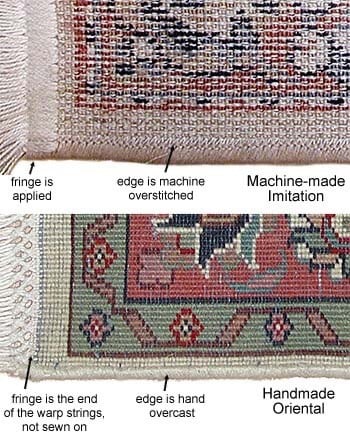Hand-knotted Rug
Hand-knotted rug
Hand-knotted rugs are made on a specially designed loom and are knottedby hand. The making of hand-knotted rugs is a very ancient art that deserves a lot of admiration! The size of the loom depends on the size of the rug and the weaving is done from the bottom to the top. The rug weaver inserts the “knots” into the foundation of the rug and they are tied by hand, this makes up the “pile” of the rug. This is a very tedious and time-consuming operation.
The length of time to produce a hand-knotted rug depends on the size and intricacy of the pattern. It is not unheard of for a super fine quality 12’ x 15’ rug to take over 2 years to produce! Hopefully, you can appreciate why the cost of these rugs is much greater.
Hand-knotted rugs can be made of wool, cotton, silk, jute and other natural materials. Silk is sometimes used in wool rugs for the outlines or highlights of the pattern to enhance the design. Hand-knotted and hand-woven rugs can last many generations if they are of good quality and properly maintained.
Hand-Knotted Rugs Can Be Woven Using Wool/Silk

Hand-knotted rugs will never be woven using synthetic materials like polypropylene, nylon, acrylic, or polyester. Rugs of this type are produced only using pure materials such as the following: SilkHand-knottedarea rugs that are woven from silk are stunningly luxurious. Silk, being an expensive material, rugs of this type have a higher price. Just be careful, as such some Rug dealers will market their rugs tagging as 100% pure silk, but in fact, the material is either mixed or just pure rayon or viscose. Both of these resemble silk even at the chemical level. Bamboo Silk, a naturally produce silk, is an excellent alternative to traditional silk.
Bamboo silk is more durable and more environmentally friendly like the naturally produced caterpillar silk. Both materials are made the same way, but just opt with bamboo silk, so we can save poor little silk caterpillar lives! Wool Rugs Sheared from a sheep, wool is hypo-allergenic, anti-bacterial and a renewable resource. The sheep are not hurt in the process — they even enjoy the haircut!
Wool and Silk When an area rug is woven with the use of both wool and silk, usually the bulk of the rug is wool and silk is woven into the intricate design to create a sheen.
Flat Weave or Hand Woven Rugs
Flat-weave is another category of hand made rugs. These rugs are hand-woven in a flat weave pattern and there is no pile. There is virtually no height to the rug. Soumak, Dhurrie, kilim and braided are all types of flat-weave rugs. With a flat weave rug, you will definitely want to put a rug pad under it to help it stay in place and provide a little more cushion to the rug.

Kilim rug

Soumak Rug
Look at the Back of the Rug
One of the best ways to tell the difference between hand-knotted and machine-made rugs is to look at the back of the rug. In hand-knotted rugs, the weaving and the knots will be slightly uneven and not perfectly uniform. On the other hand, a machine-made rug will look very uniform and perfectly even. The more detail in the design when
looking from the back, the better the quality of the rug.

Look at the Fringes of the Rug
Another way to determine if a rug is hand-knotted or machine made is to look at the fringes. As you can see from the picture above, the fringe of a Machine made rug is sewn on and is attached as a finishing touch.
The fringe of a hand-knotted rug is an extension of the rug foundation, as in the picture below.
What Makes a Rug Valuable
Rug gets valuable by numerous factors, such as the knot count, dyes used and quality of the yarns, age, kind, design, and most importantly if it is hand knotted or not. If it is not hand knotted forget about it and don’t waist your time.Hand knotted rugs are typically more costly, but the life span of these rugs is greater and therefore usually a better value for your money.
4. thing you should know when buying rugs
-Knot count: by knot count, we are referring to the number of knot per square inch that was tied to the rug by hand knot count ties in directly how much time and effort was put into making the rug.this more than other factors will affect the price of the rug. to count the knots in a rug simply look at the backside of it when you turn your work over you will see many little squares of color on the back. Each of these are knots.take a ruler and count the number of a knot in an inch running both vertically and horizontally across the back.multiply these numbers through and you get an approximate knot count for your rug. Now you know how to count knots in most rugs. In average rug will have between 100-250 knots per inch.anything over 300 knots per inches considered to be very fine and some of the finest rugs in the world have over a thousand knots per inch.
-thickness: thickness refers to the height of the pile in your rug. This is pretty straightforward. The taller the pile is, the more rug there is to wear through before the rug wears out. thickness plays a very major role in the life span of your rug.
-density: a little tougher to judge is the density of your rug. density refers to how packed together the fibers of your rug are. If a rug is more densely woven fiber support each other more, creating a much stronger body to your rug.also dirt which over time is the number one killer of rugs.has a harder time working it’s way down to the base of the knots or can easily grind and cut away the fibers of your rug. so much like thickness density plays a major role in the life span of your rug. To test the density of your rug, take your fingers and try to work them directly downward into your rug. Any more density woven rugs are must be much more difficult to do
-Wool quality: it is the hardest of the four factors to judge. A good wool has a lot of lanolin, the natural oil comes from the sheep. lanolin gives the rug a nice sheen and its illustrious appearance. the testable quality, grab your rug and run your finger over the surface. A good wool will feel supple to the touch. when conversely bad wool will feel dry and brassy to the touch. good wool will last for generations where bad wool can wear out in a matter of years.
So keep these things in mind when you are looking to buy a hand-knotted rug. And of course, always remember that for quality handwoven rugs come to us com to Shabahang rug store.






